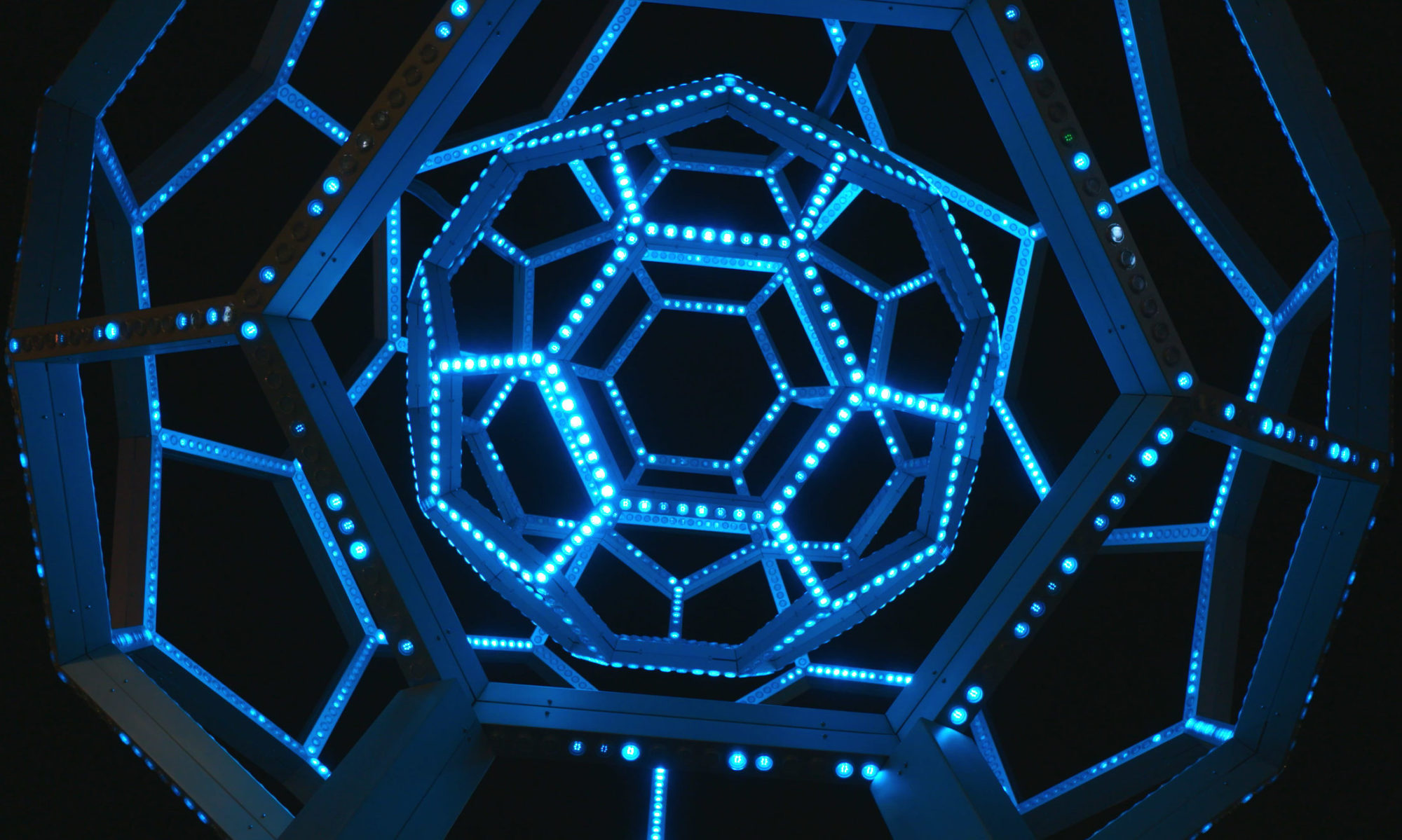I started by ordering a package of glowsticks of assorted colours, which arrived on Monday. I cut one open with a utility knife, and was able to extract the interior glass tube containing the fluorescent dye without breaking it. 
I made a quick drawing in magic marker and charcoal of a campfire. Then I broke the glass tube, and added hydrogen peroxide to the dye. At first, it didn’t glow very brightly, which was kind of disappointing.

I realized there were a few problems – the first was that the chemical that causes the dye to fluoresce didn’t mix very well with the red dye itself, so I had to work hard to keep them from separating. I found when I started painting that the pigment of the market had a much stronger effect on the appearance of the colour of the light than the dye from the glowstick. The other one was that the hydrogen peroxide I was using was a topical solution, which is not nearly as strong as the chemicals that come in the glowstick itself. (The next time I tried it, I used both chemicals from the glowstick, which worked better.)

I painted the glowing dye over the top of the campfire drawing, moved it into a darker environment, and pretty pleased with the effects. Then I moved it into an area of almost total darkness. The mix of orange showing through from the market and the greenish glow from the dye that hadn’t combined well with the glowstick pigment looked especially interesting in total darkness. I also found that areas that were completely filled in with a darker color of magic marker didn’t show the glowing pigment as well as I expected in any light.

Now that I had experimented with the logistics of painting with glowsticks a little bit, I decided to try something that required a little more precision. Since the hydogen peroxide also tended to make the markers bleed and I usually use gouche paint, which is water soluble, I also wanted to make sure that I wasn’t going to accidentally destroy the under-painting of whatever I end up working on.
I came up with the concept at about half past one in the morning, and I must have been feeling artsy at the time. I started with an inspirational phase and a related picture. I kept it relatively simple, since as I said, I wasn’t sure whether or not the chemicals would destroy the paint. I used blue glowsticks for the second picture I experimented with, and those had far fewer dye separation issues than the red glowstick had. 
The goal was to paint a globe on the face of the watch, and cause only the words ‘too late’ to appear when the painting was in the darkness. Unfortunately, it was a bit difficult to get the glowstick dye to create a globe with any degree of precision – the chemcals are even thinner and more inclined to bleed than watercolours, so if I want to do anything with detail I will need to find a way to use a binder to thicken it without losing the glow. I also noticed that it’s difficult to paint over areas that have already been painted – for example, the most I could do was shadow the words in glow, not paint over them as an exact duplicate.

While I’m not necessarily unhappy with how the glowstick trials went (actually, I think the resulting pictures look kind of cool), I do want to look into getting phosphorescent pigments that I can mix with something like acrylic paint, because I want to try working with something that is thicker and has a permanent glow. Alternatively, I may experiment with glowstick paintings that use no underpainting at all and are somewhat indistinct or abstract, which would solve the bleeding and the not appearing over pigment issues.
Shopping List
Phosphorescent pigments (much cheaper)/paint (easier but more expensive) – Glowminex sells an assortment of glowing pigments for ~$7 an oz.
Acrylic paint/some other kind of pigment binder (if using pigments)
Larger canvas for final project.
If not using permanent pigments, rent a better camera – my cell phone does not do these pictures justice at all.
